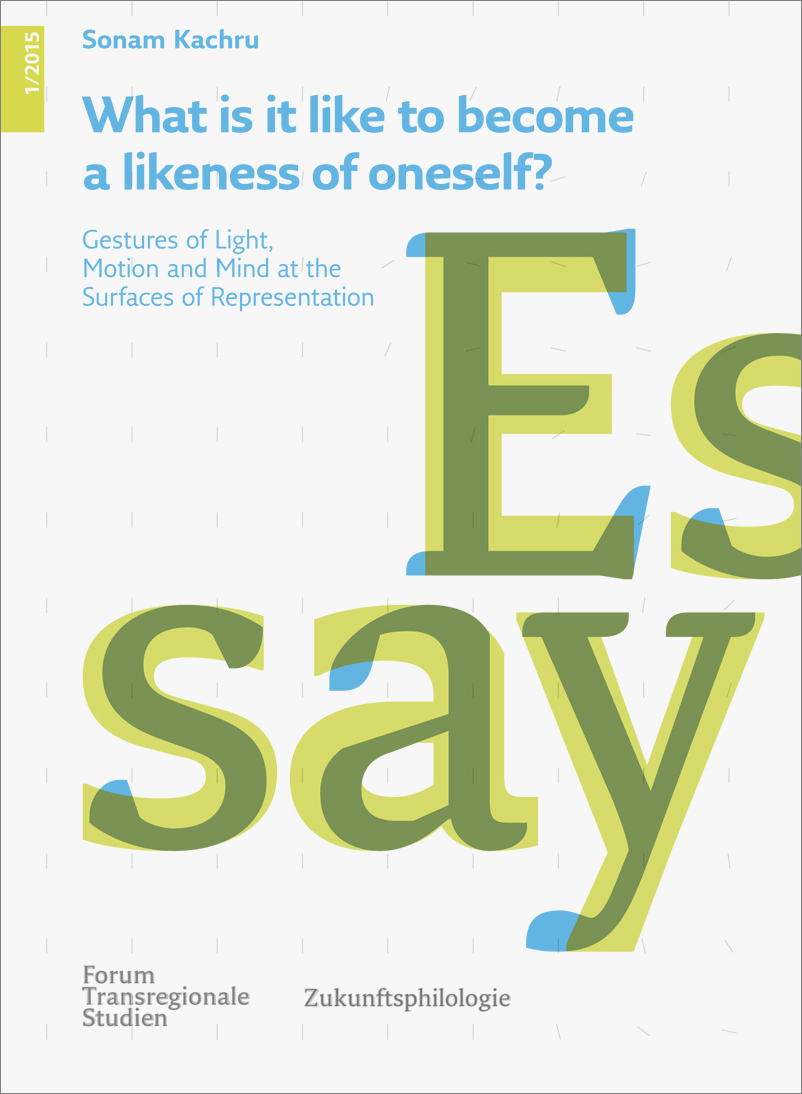Sonam Kachru was Zukunftsphilologie Fellow 2013/2014 at the Forum Transregionale Studien, Berlin. A PhD candidate in the Philosophy of Religions at the University of Chicago, he specializes in the history of philosophy, with a focus on Buddhist and Brahmanical philosophical traditions in premodern South Asia. Sonam Kachru is currently Junior Research Fellow at the Max Planck Institute for the History of Science, Berlin.
DOI: 10.25360/01-2017-00003
ISSN (Print) 2364-8945
ISSN (Online) 2364-8953
What is it Like to Become a Likeness of Oneself? Gestures of Light, Motion and Mind at the Surfaces of Representation
Read Full Text online / download PDF
This essay explores the invocation of painting in a trope of Sanskrit literature which would have it that people can become like painted likenesses of themselves. While considering the invocation of painting in Sanskrit literature (with special reference to the work of Kālidāsa), the essay is particularly concerned with the Buddhist poet Aśvaghoṣa (fl. 1st-2nd century C.E.) and his use of this trope. As used by Aśvaghoṣa this trope functions as a figure of figuration, inviting us to think through two questions at once: firstly, what is it to be a human being? And secondly, what are the continuities between the kind of representation the arts of literature and painting make possible? Exploring these questions together—while exploring the place of self-representation in our images of ourselves—I argue that Aśvaghoṣa carefully modulates his use of such figures of figuration—his invocation of painting in language—to promote a radical model of literary attention or reading, and a radical experience of language.


